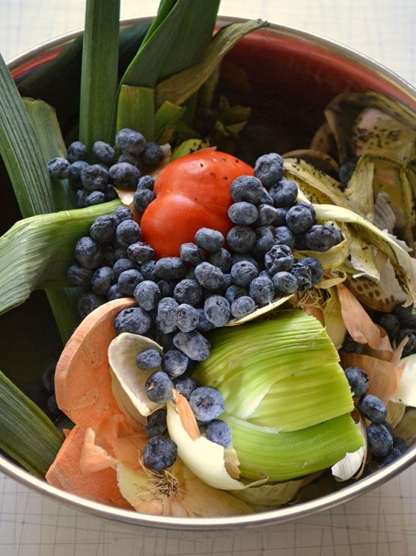How to Compost in a Small Space

While composting is fairly simple to do, many would assume you need a large yard or even outdoor space. You can compost right on a fire escape, your AVA U District balcony or in a shared yard space. Another misconception is that composting attracts bugs, rodents or smells bad, all of which are untrue if you do it right. You can even create beautiful decorative containers for your compost bin with reclaimed wood or pallets.
Composting does take a little bit of extra effort, but the payoff for the environment is outstanding. Even if you don’t have a yard and aren’t going to use the composted material to fertilize plants, you are saving hundreds of pounds of food waste per year that would normally go straight into a landfill.
If you throw away your food scraps into a plastic bag, they become buried in a landfill under thousands of pounds of trash which will never see daylight. Plastic never really decomposes, but just breaks down into smaller pieces of plastic which requires sunlight and bacteria, none of which will happen buried in a sea of trash. This is where composting can help landfills from overflowing.
If you are going to be composting in a small space, the first step is to either purchase a compost bin from a hardware store, or look up tutorials on how to build one online. Here are some great DIY options, including wooden pallets, milk crates and plastic storage bins.

Images (clockwise): A Less Than Perfect Homemaker, BlissfulBritt, Young House Love
There are a few methods of composting, but all have all the same basic requirements. You need a container with plenty of air space, a layer of straw or dirt (or any aerating material) and all of your compost materials.
You can add most of your food scraps to the bin. Some examples include old produce, vegetable or fruit scraps, pulp from your juicer, egg shells, coffee grounds and tea bags. Don’t add any meat, fish or pet food as that will create odor and attract rodents! You also need to add dry material like leaves, yard clippings, newspaper pieces, cardboard or dryer lint.
There needs to be a good balance of wet and dry materials to decompose quickly. Keep the mixture moist but not wet. This means you will probably need a 60% wet, 40% dry ratio. You will also need to mix your compost every few weeks. If you are using a small bin you can do this by shaking it around, or with a larger bin, using a shovel.
The benefit to composting in a small space is the enclosed bins you will be using. This will keep any pests out of your bin and any smell inside of it. An enclosed container also speeds up the composting process since it keeps the heat in. Your compost should be ready in a couple of months.
To make it easier on yourself, keep a separate compost can or container next to your trash so you can throw food scraps in it until you want to take it to your compost bin. This eliminates the need to go back and forth every time you want to throw out a banana peel or apple core.

Image: Babble
Remember to keep your compost bin moist but not wet and maintain a balance of wet and dry materials, and in a few weeks you should have a nice batch or nutrient rich fertilizer to use or give away to friends. Happy composting!